Introduction to Email Marketing Best Practices
Marketing Emails best practices are important techniques created for email marketers to improvise email marketing effectiveness. These practices cover everything from creating attention-grabbing subject lines to avoiding the use of spamming words, ensuring that the emails reach your audience's inboxes and also engage them for running successful email campaigns.
Why Email Practices are Crucial for Successful Email Marketing Campaigns
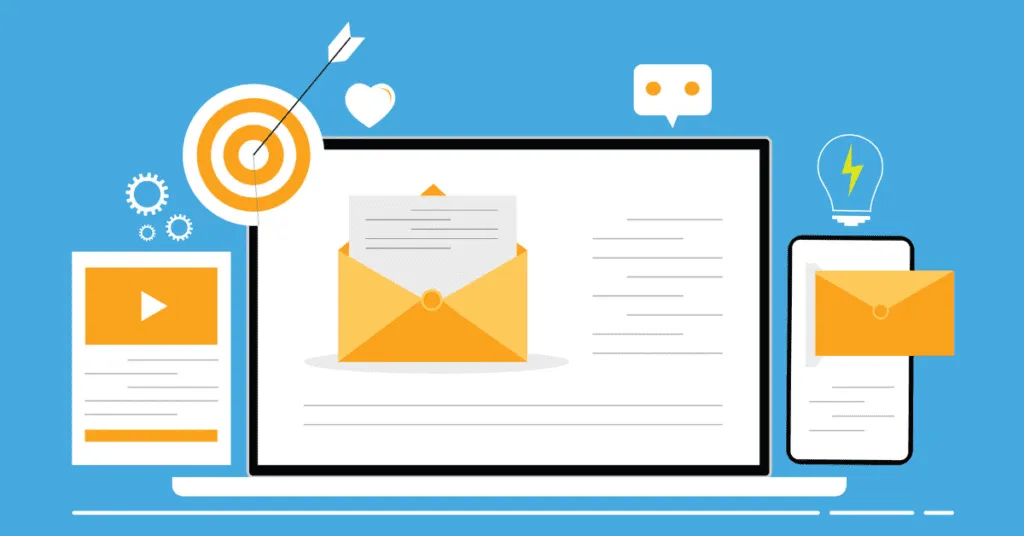
Marketing Email practices directly impact the success of your email campaign. If email marketer adheres to these practices it will improve email deliverability, engagement, and conversions leading to successful email marketing campaign Implementing best practices means:
Higher email open rates.
Increased engagement from your target audience.
Improved conversion rates through targeted content.
How to Align Your Email Content with Your Email Marketing Goals?
To align your email content with your marketing goals, you must first define what success looks like for your campaigns. Whether it's driving sales, increasing website traffic, or boosting engagement, every element of your email should be purpose-driven.
Define clear goals: Understand what you aim to achieve with each email.
Segment your audience: Deliver tailored messages that speak directly to different audience segments.
Track and refine: Use analytics to monitor performance and refine your approach for better results.
So, if you're not yet convinced that honing your email writing skills is worth your time, these reasons might just change your mind. It's not just about sending messages; it's about connecting with millions, making more money, and being part of what every smart marketer is doing today.
10 Best Email Marketing Practices to drive results
Email Subject Lines Mastery

Appropriate Subject line gives a good First Impression
The Ideal Email Subject Line Length: Research suggests keeping your subject line between 50-60 characters. This length ensures visibility in most email clients, including mobile email clients, where screen real estate is precious.
Action-Oriented Language & Personal Touch: Infuse your subject lines with verbs that inspire action and personalize where possible. Personalization, such as including the recipient's name or past interaction details, can significantly lift open rates. However, avoid using "no reply" email addresses as the sender; it can discourage engagement right from the start.
Avoid Spam Triggers

Word Choice Matters
The Thin Line Between "Catchy" and "Spammy" : Choosing the right words for your email content is crucial. Certain terms and phrases, while seemingly attractive, can trigger spam filters, significantly reducing the visibility of your messages.
Avoid Overused Sales Language: Words like "free," "guarantee," and "no risk" are notorious for triggering spam filters. Opt for language that fosters trust without sounding overly salesy.
Use Action-Oriented Language Wisely: While it's essential to encourage readers to take action, ensure the call to action (CTA) is clear, direct, and honest. Misleading CTAs can lead to higher spam complaints.
Value-Driven Content
Crafting Emails That Readers Anticipate: The ultimate goal of your email should be to provide value. This doesn't just help with engagement; it also builds a relationship with your audience that goes beyond the transactional.
Educate and Inform: Share insights, tips, and valuable content that aligns with your audience's interests and needs. This approach not only enhances engagement but also establishes your brand as a credible source of information.
Personalization Is Key: Tailoring your email content to fit the individual interests and behaviors of your subscribers can significantly increase relevance and reduce the likelihood of being marked as spam. Leveraging email marketing tools for segmentation and personalized content creation is essential for this.
Optimizing Email Content: Crafting Messages That Resonate

Clarity and Conciseness
Balance Between Information and Engagement: The essence of a powerful email lies in its ability to convey a clear message succinctly. In a world where attention is the new currency, your emails need to cut through the noise, delivering value without overwhelming the reader.
Be Direct: Start with your main point or offer. This direct approach respects your reader's time and ensures the core message isn't buried under fluff.
Use Simple Language: Complex jargon can alienate your audience. Opt for simple, straightforward language that's accessible to all. Remember, the goal is to communicate, not to impress with vocabulary.
Edit Sincerely: Every word in your email should serve a purpose. If it doesn't add value or drive action, it's probably best left out. This is where the art of editing becomes your ally in achieving clarity and conciseness.
Structured for Success
Designing Your Email for Readability and Engagement: An email's structure can significantly impact how the content is received and acted upon. In crafting your email, consider how layout, design, and organization can enhance the reader's experience.
Use Headings and Subheadings: Break up your text with headings that guide the reader through your message. This not only improves readability but also allows skim readers to grasp the main points quickly.
Incorporate Bullet Points: When listing features, benefits, or tips, bullet points can help organize information, making it easier to digest.
Call to Action (CTA): Your CTA should be clear and compelling, encouraging readers to take the next step. Whether it's subscribing to a newsletter, making a purchase, or learning more about a product, the CTA should be impossible to miss.
Strategic Practices for Growing Your Email List

Audience Segmentation
Understanding Your Audience: Start by analyzing data to understand different customer personas. This might include demographic information, browsing behavior, and purchase history.
Creating Segments: Break your audience into segments based on common characteristics or behaviors. This could range from new subscribers who need welcome emails, to long-time customers who might appreciate loyalty rewards.
Tailored Content: For each segment, craft email content that resonates. Personalization goes beyond using a subscriber's name; it's about delivering content that matches their interests and stage in the customer journey.
Engagement and Retention: Segmented campaigns have been shown to drive higher open rates, click-through rates, and reduced unsubscribe rates. By delivering value-driven content tailored to specific needs, you foster a deeper connection, encouraging continued engagement.
Consistency is Key: Building Trust and Expectation

Maintaining a Regular Schedule: Consistency in your email marketing efforts does more than keep you top of mind; it builds anticipation and trust with your audience. Here's how to achieve it:
Develop a Content Calendar: Plan your email campaigns around key dates, product launches, or content themes. This helps in maintaining a balance between promotional emails and value-driven content.
Frequency Matters: Determine the right frequency for your emails by considering your audience’s preferences and your capacity to produce quality content. Whether it’s weekly, bi-weekly, or monthly, the key is regularity.
Monitor and Adjust: Use email marketing metrics to gauge the effectiveness of your scheduling. High engagement rates may suggest your frequency is spot on, while a spike in unsubscribe rates might signal overcommunication.
Incorporating Essential Practices
In growing your email list, certain practices are non-negotiable. These include:
Opt-In Strategies: Ensure you’re building your list ethically with clear opt-in methods. Double opt-in processes are effective in verifying genuine interest.
Avoid Spam Triggers: Be mindful of language that could flag your emails as spam. This includes both the content of your email and your subject lines.
Leveraging Tools and Platforms: Utilize email marketing platforms that offer robust features for managing your list, automating campaigns, and providing actionable analytics. Whether it’s Mailchimp, Constant Contact, or another provider, the right tool can make a significant difference.
Technical Setup: Ensuring Your Emails Reach the Inbox
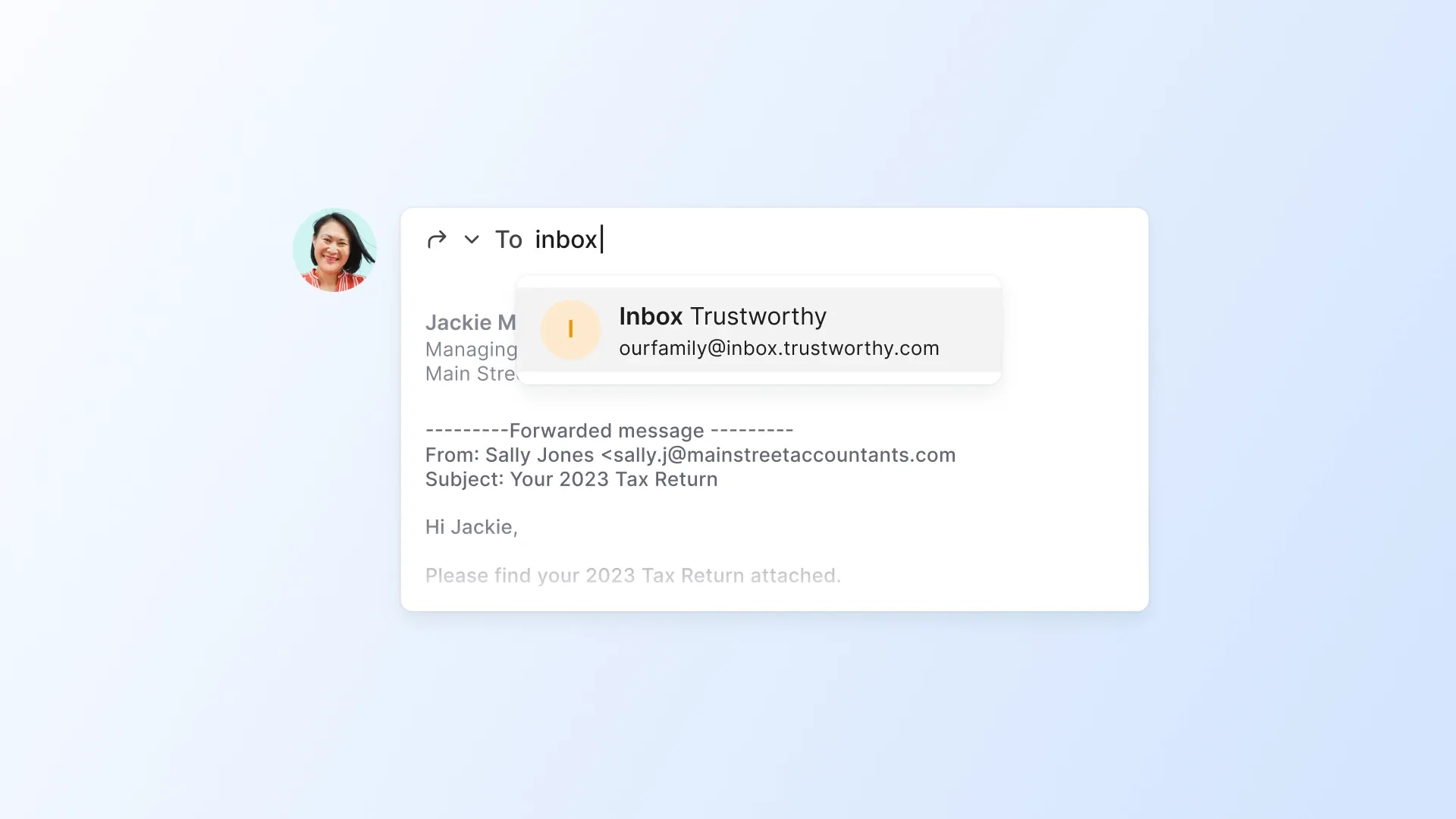
Trustworthy 'From' Addresses
Building a Recognizable Brand Identity: Your 'From' address serves as the first point of identification for your recipients. It's not just a technical detail; it's a brand promise.
Consistency is Crucial: Use a consistent 'From' address for all your campaigns. This helps build recognition and trust over time, reducing the likelihood of your emails being marked as spam.
Brand Your Address: Whether it’s your name, your company's name, or a specific service name, ensure it clearly represents your brand. This immediate recognition factor significantly impacts open rates.
Avoid 'No-Reply' Addresses: Sending from a 'no-reply' address can discourage engagement and harm your relationship with the audience. It signals a one-way communication channel, contrary to the interactive nature of successful email marketing campaigns.
Improving Email Deliverability

Ensuring Your Message Gets Through: Deliverability is influenced by several technical factors. Here's how to optimize them:
Authenticate Your Emails: Use SPF, DKIM, and DMARC records. These authentication protocols verify your emails' integrity, reducing the chances of them being flagged as spam.
Clean Your Email List Regularly: Remove inactive subscribers and incorrect email addresses. This not only improves your engagement rates but also your sender reputation, which is crucial for email deliverability.
Monitor Feedback Loops: Set up feedback loops with major email providers. This allows you to identify and remove subscribers who mark your emails as spam, thereby protecting your sender reputation.
Integrating Advanced Practices
Beyond the basics, integrating advanced technical practices can further bolster your email marketing strategy:
Leverage AI for Optimization: Some of the best email marketing platforms now offer AI-driven insights for optimal send times and content personalization, tailoring your campaigns to the behavior and preferences of your audience.
Segmentation and Personalization: Use advanced segmentation to deliver highly targeted and relevant content. Personalization extends beyond 'Dear [Name]'; it's about tailoring the email content based on the subscriber's journey and interactions with your brand.
Driving Engagement and Conversion

Directing Your Readers with Confidence
A clear, compelling call-to-action (CTA) is the linchpin of effective email marketing. It’s the signpost that tells your readers exactly what you want them to do next, whether that’s making a purchase, signing up for a webinar, or downloading a guide.
Visibility is Vital: Place your CTA prominently within your email. Whether it’s a button or a hyperlink, make sure it stands out from the rest of your content.
Be Specific: Vague CTAs leave room for indecision. Use action words that convey the benefit: "Get My Free Guide" is far more enticing than a simple "Click Here."
Limit Choices: Too many CTAs can overwhelm and paralyze your readers. Focus on one primary action you want them to take.
Mobile Optimization
Ensuring Seamless Interaction Across Devices
With an increasing number of users accessing emails on their mobile devices, mobile optimization is no longer optional; it's essential. Here’s how to ensure your emails look great and function well on any device:
Responsive Design: Use email templates that automatically adjust to the screen size of the device. This ensures that your content is always readable and engaging, no matter where it’s viewed.
Test on Multiple Devices: Before sending out your campaign, test how your email looks on different devices and email clients. This can help catch any formatting issues that could detract from your message’s effectiveness.
Simplify Your Layout: Complex designs can become muddled on small screens. A clean, simple layout with plenty of white space can enhance readability and engagement.
Analytics and Improvement
Understanding Key Performance Indicators (KPIs)
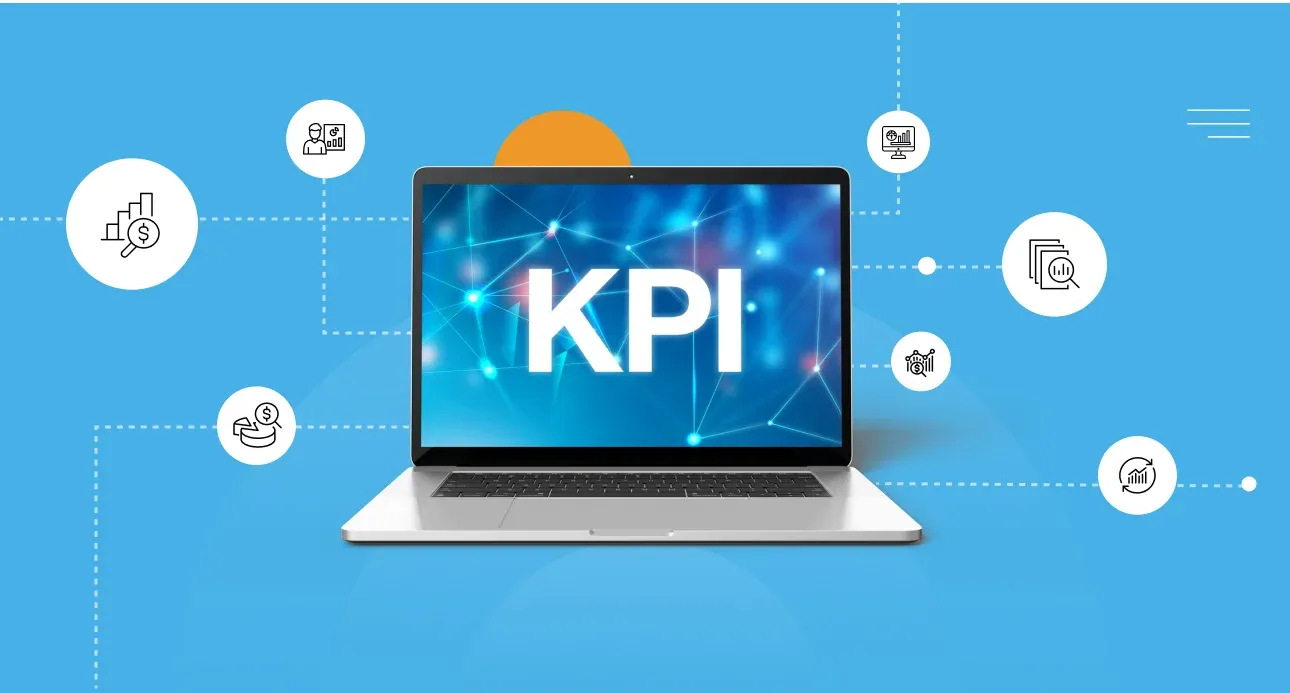
The first step in gauging the success of your email marketing efforts involves delving deep into the analytics. Understanding your key performance indicators (KPIs) is paramount.
Open Rate: This email marketing metric offers insights into how many people are opening your emails, which can reflect the effectiveness of your subject lines.
Click-Through Rate (CTR): CTR measures how many recipients are clicking on links within your email, indicating the relevance and appeal of your content and CTAs.
Conversion Rate: Ultimately, the goal of most email campaigns is to drive actions, such as purchases or sign-ups. The conversion rate tells you how many clicks turned into desired actions.
Integrating Advanced Tools and Techniques
To truly excel in email marketing, leveraging advanced tools and techniques for analytics and improvement is essential. Many email marketing platforms offer built-in analytics features, but don’t shy away from integrating external tools for deeper insights.
Advanced Analytics Platforms: Tools like Google Analytics can track the behavior of users who click through from your emails, providing a clearer picture of their journey on your website.
Heatmaps: Understand how subscribers interact with your email content through heatmap tools. This can reveal which parts of your email are attracting the most attention and which are being overlooked.
Compliance and Ethics: Building Trust with Your Audience

Ensuring the Right to Unsubscribe: Empowering Your Audience
Giving recipients the power to easily unsubscribe from your email list might seem counterintuitive when the goal is to grow your audience. However, this transparency is crucial for maintaining trust and respect between you and your subscribers.
Clear Unsubscribe Options: Include a visible and straightforward unsubscribe link in every email. This not only complies with email marketing laws like the CAN-SPAM Act but also respects the recipient's choice, enhancing your brand's reputation.
Simplify the Process: The process should be as simple as clicking a link, without requiring additional logins or multiple steps. A complicated unsubscribe process can frustrate users and lead to spam complaints.
Feedback Opportunity: Offering a brief survey or feedback option during the unsubscribe process can provide valuable insights into why subscribers are leaving, helping you refine your strategy and improve retention over time.
Adhering to Legal Requirements
Staying informed and compliant with the laws governing email marketing is essential. This not only avoids potential fines but also signals to your subscribers that you value their privacy and rights.
CAN-SPAM Compliance: For those operating in or targeting customers in the United States, adherence to the CAN-SPAM Act is non-negotiable. This includes using accurate 'From' addresses, clear subject lines, and including your physical business address in every email.
GDPR Considerations: If your subscribers include individuals from the European Union, compliance with the General Data Protection Regulation (GDPR) is crucial. This includes obtaining explicit consent before sending emails and providing clear information on how subscribers’ data is used.
Respect for Privacy: Beyond legal compliance, respecting subscriber privacy is fundamental. This means responsibly managing subscriber data, being transparent about data usage, and protecting subscriber information from unauthorized access.
Improving Your Email Marketing Through Compliance and Ethics
Embedding compliance and ethics into your email marketing strategy is not just about avoiding legal pitfalls; it’s about fostering a relationship based on trust and respect with your audience.
Use of Visuals and Data: Incorporate charts or infographics in your emails that clearly outline your privacy policies or summarize the key points of compliance for easy understanding.
Personal Stories and Examples: Share anecdotes or case studies about how your adherence to these practices has positively impacted your subscribers or prevented potential issues.
By integrating these email marketing best practices, from crafting the perfect email subject line to adhering to legal compliance, marketers can build meaningful connections with their audience. Remember, successful email marketing is about more than just sending emails; it's about creating value and building relationships.
Advanced Practices for successful email marketing
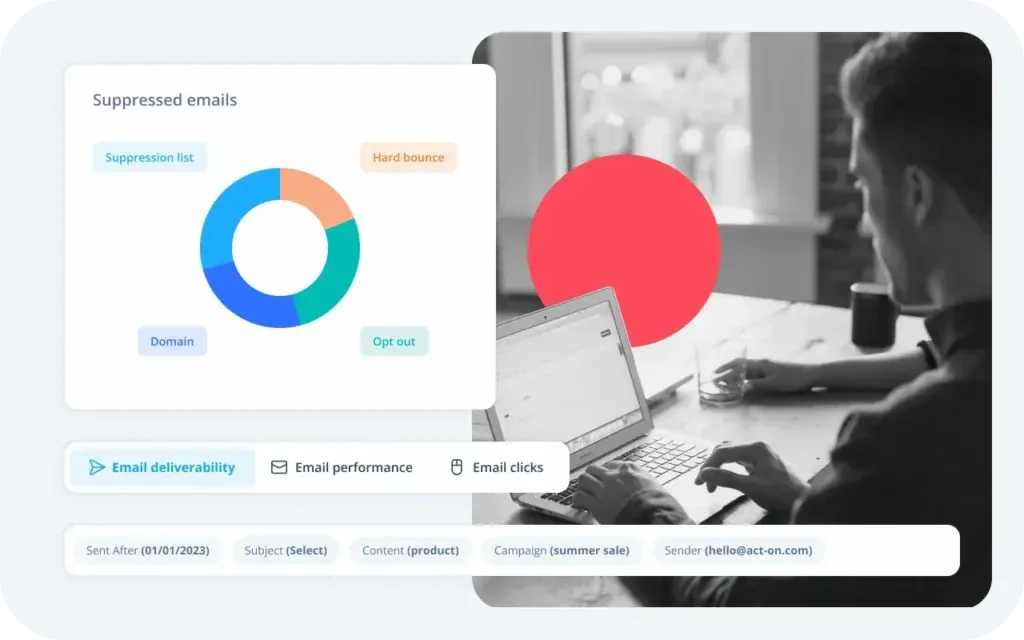
Advanced Practices for Successful Email Marketing
In today’s digital landscape, the success of your business hinges on your ability to connect meaningfully with your audience. Email marketing, a critical component of this connection, requires strategic planning and the right set of tools. This guide dives into advanced practices and showcases specific tools and platforms that can elevate your email marketing campaigns.
Leveraging Email Marketing Tools for a Successful Email Marketing Strategy
The foundation of a powerful email marketing strategy lies in choosing the right tools that offer essential features and enhance engagement.
Automated Email Tools: Automate welcome emails and follow-up sequences to ensure timely and relevant engagement with new subscribers. Mailchimp excels in this area, providing user-friendly automation workflows that cater to various actions and behaviors.
Segmentation and Personalization with HubSpot: HubSpot allows for sophisticated segmentation and personalization, employing double opt-in features to build a list of engaged subscribers. Tailoring content based on subscriber data can significantly increase open rates and foster loyalty.
Integration with Marketing Channels through Sendinblue: Sendinblue offers seamless integration with your website and online store, enabling you to capture website visitors' data and use it to inform and optimize your email campaigns.
Best Email Marketing Platforms for a Successful Email Marketing Campaign
Choosing the right email marketing platform is crucial for the effectiveness of your email marketing efforts. Here are some platforms renowned for their features and reliability.
Mailchimp: Known for its user-friendly interface, Mailchimp provides extensive analytics to track email engagement metrics, making it easier to measure the success of your campaigns. Its strong deliverability rates ensure your messages reach both mobile email clients and desktop users.
Constant Contact: Offers a wide range of email templates and tools for creating landing pages that convert. Its preview text feature is particularly useful for increasing open rates by giving subscribers a glimpse of the email content unlike most email marketing platforms.
GetResponse: This platform stands out for its A/B testing capabilities, allowing you to refine subject lines, email content, and CTAs. GetResponse is also compliant with the CAN-SPAM Act and GDPR, ensuring your email marketing practices are both ethical and effective.
Driving Engagement and Compliance
Engaging your audience and adhering to legal standards are both crucial for the success of your email marketing campaigns.
Use of “No Reply” Email Addresses: While convenient, "no reply" addresses can hinder engagement. Platforms like AWeber encourage the use of accessible email addresses to invite feedback and questions from your subscribers.
Adhering to Anti-Spam Laws with Campaign Monitor: Campaign Monitor simplifies compliance with anti-spam laws by automating the inclusion of unsubscribe links and managing subscriber lists to respect opt-in preferences.
By integrating these tools and platforms into your email marketing strategy, you can significantly improve the reach and impact of your campaigns. From crafting compelling welcome emails with Mailchimp to leveraging the segmentation capabilities of HubSpot and ensuring legal compliance with Campaign Monitor, these practices and tools are designed to help you build meaningful connections with your audience and drive measurable results. Remember, the key to successful email marketing lies not just in sending emails but in creating value and building relationships with your subscribers.
Effective B2B Email Marketing Practices
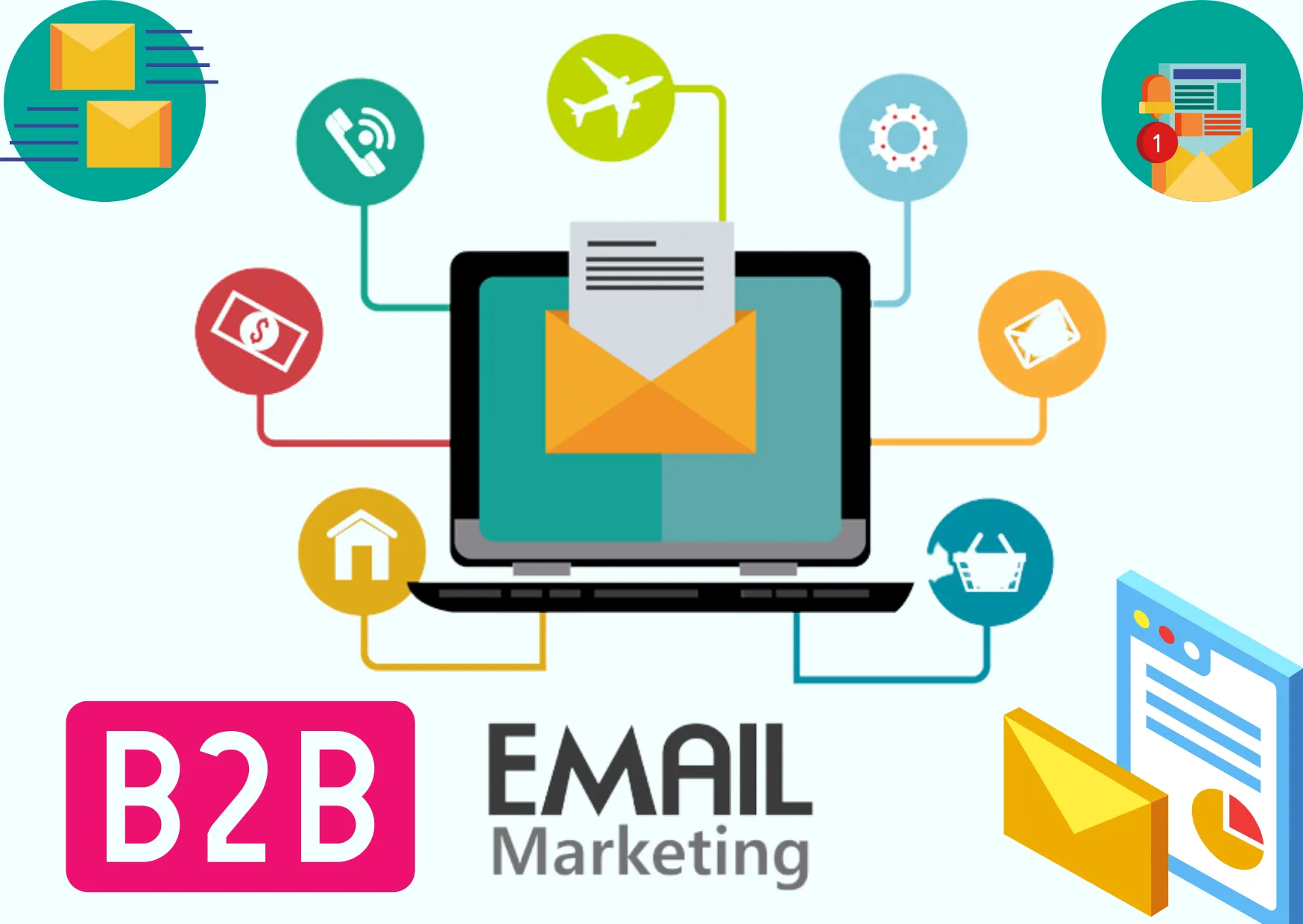
Implement Account-Based Marketing (ABM)
Account-Based Marketing (ABM) involves sending customized emails to specific businesses or decision-makers. This approach helps in directly addressing the needs and challenges of your target clients, making your emails more impactful.
Focus on Providing Value
Your emails should aim to educate your audience rather than just sell to them. Share insights, tips, and solutions that can help them overcome their challenges. For example, include useful guides or case studies that showcase how your services or products can solve industry-specific problems.
Segment Your Audience
Divide your email list based on criteria like industry, company size, or role within the company. This allows you to tailor your messages to match the specific needs and interests of each segment. Personalized emails are more likely to engage and convert potential clients.
Use Drip Campaigns to Nurture Leads
Drip campaigns involve sending a series of emails over time to gradually guide potential clients through the buying process. Start with a welcoming email, then follow up with emails that provide more detailed information about your products or services, leading up to a conversion.
Optimize Your Email Timing
Send your emails at times when your audience is most likely to read them. This could vary depending on your industry and the specific schedules of your target audience. Use data from your email campaigns to find the most effective times to send your messages.
Furthermore, B2B marketing is not static; it evolves with emerging technologies, changing market dynamics, and the shifting needs of businesses. Keeping abreast of best practices, therefore, is not merely beneficial—it's a necessity for staying relevant and competitive.
Therefore, by incorporating these detailed strategies and examples into your B2B email marketing efforts, you can enhance engagement, build lasting relationships, and ultimately drive success in a competitive digital landscape.
Conclusion
Encouragement to Implement these Best Practices & Email Templates
In wrapping up our guide of email marketing best practices, it's clear that the path to a successful strategy involves a continuous commitment to learning, adapting, and refining your approach.
Incorporating strategies such as leveraging email programs for split testing and ensuring your email message resonates with email subscribers can significantly enhance campaign effectiveness.
As we conclude, here are some actionable steps and critical reminders to ensure you fully leverage the insights provided in this guide, from drafting the initial blog post to sending the promotional email.
Putting Best Practices into Action
The journey to email marketing excellence is ongoing and dynamic. To guide you in applying the shared insights and preparing for future campaigns:
Engage With Purpose: Focus on crafting messages that not only reach but resonate with your audience, driving meaningful engagement. Incorporate sign up form strategically on your website and in other marketing channels to grow your contact list.
Personalize and Segment With Precision: Use email service providers that offer robust tools for segmenting your subscriber list and tailoring content, enhancing campaign effectiveness and customer loyalty.
Embrace Agility in Your Strategy: The digital marketing landscape is ever-evolving. Stay ahead by being flexible, testing new ideas through split testing, and incorporating feedback. Remember to send subscribers content that matters to them, avoiding the same message fatigue.
Email Templates
Using well-designed email templates as a starting point can save time and ensure consistency across your campaigns. Customize these to mirror your unique brand voice and meet your audience's specific preferences, adding descriptive alt text to images for better accessibility.
Key Takeaways for Optimal Results
Leverage Data-Driven Insights for Landing Pages: Focus on analyzing your email campaign's performance metrics, particularly those leading users to your landing page. Understanding how your emails contribute to traffic and conversions on these pages allows for strategic optimizations, ensuring that your content resonates with your target audience and drives the desired actions.
Enhance Engagement with Mobile-Optimized Content: Given the prevalence of mobile device usage for email checking, it's imperative to ensure that your emails and landing pages are optimized for mobile. This entails designing emails that are easily readable on smaller screens, with clear calls-to-action that lead seamlessly to mobile-friendly landing pages. This approach not only improves user experience but also boosts engagement rates.
Expand Your Email Contacts Intelligently: Growing your list of email contacts is a critical aspect of any email marketing strategy. However, it's equally important to focus on the quality of these contacts. Incorporate signup forms on your landing pages and utilize lead magnets that are relevant to your target audience. This ensures that your email list is populated with engaged subscribers who are genuinely interested in your offerings.
- Stay Compliant and Build Trust: Adherence to email marketing laws, such as the CAN-SPAM Act and GDPR, is non-negotiable. Compliance not only prevents legal complications but also signals to your subscribers that you value their privacy and are committed to maintaining a trustworthy relationship. This includes transparent practices around the acquisition of email contacts and the respectful handling of their data.
- Support a Culture of Feedback: Encouraging feedback from your subscribers can provide valuable insights into their preferences and the effectiveness of your emails. Whether through direct responses, engagement with shipping notifications, or interaction with your landing pages, actively seeking and incorporating feedback can significantly refine your strategy and enhance subscriber satisfaction.
By focusing on these key areas data-driven optimization for landing pages, mobile device accessibility, strategic email contact growth, compliance with email regulations, and a commitment to subscriber feedback you'll set the stage for a more effective, engaging, and successful email marketing campaign.

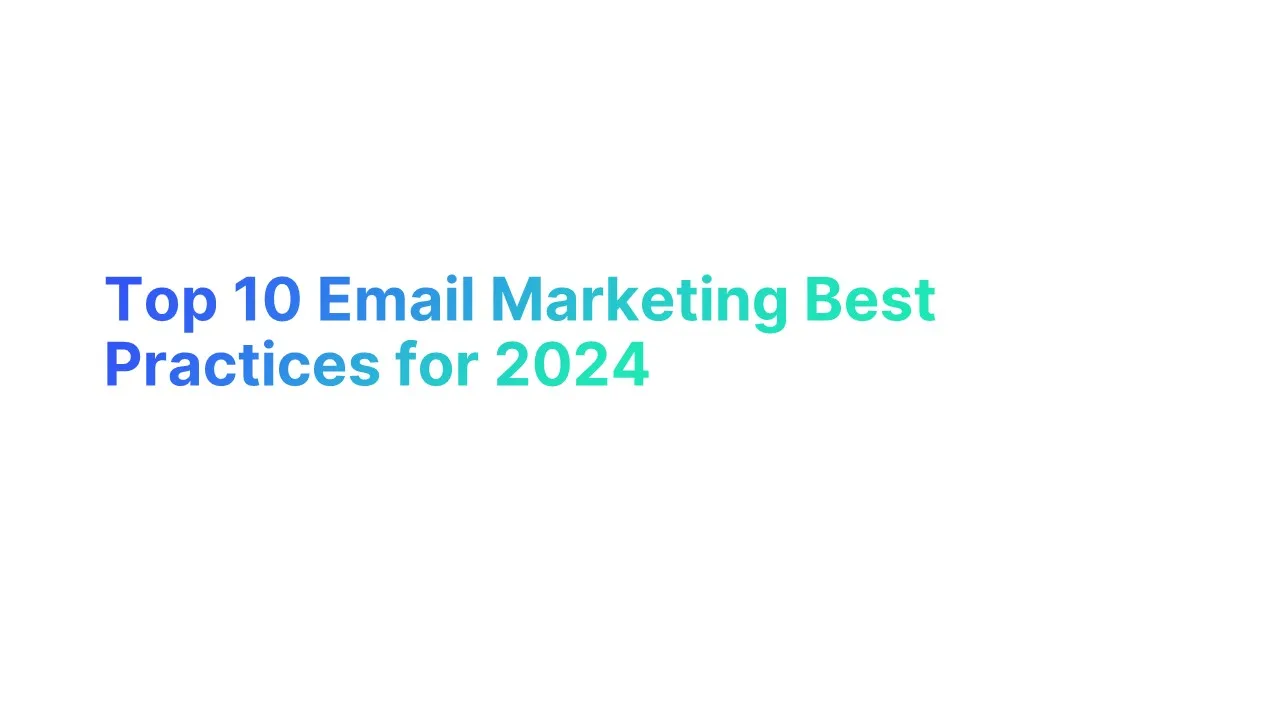



.jpg)

.jpg)
